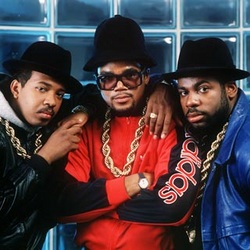Hip-hop wear / east coast

“Most adults these days, when they think of urban streetwear sometimes make the mistake of confusing it with hip-hop wear, but they are really two different kinds of clothing brands representing two different worlds,” says Ezine expert author Bob Randooke, “Hip-hop fashion represents more of the ‘rapper and gangster’ type of clothing, but urban streetwear has a way different history and origin with its roots in Southern California surf and skate” (Birch). There are many differences in the aesthetic, for example, hip-hop clothing has transitioned from the very bright patterns and prints of the 80s, to adopting athletic wear in the 90s, and then combining these elements with very high-fashion brands like Gucci and Louis Vuitton in the 2000s as well as adding chains and “bling” to the mix. The style has been an expression of racial identity, and although streetwear represents identity as well, it is based on recreation or activity, as a display of associating with a specific trendsetting group, rather than race. As many athletic sportswear brands were popularized in the 90s such as Adidas, Puma, Reebok, and Nike collections, middle- to upper-class Caucasian consumers wore tracksuits and sneakers to go running, while African American consumers adopted it into hip-hop culture. It became an expression of pride, as the most successful African American icons were sports heroes, mainly in basketball, and sponsored these brands. It can be assumed that the heavy jewelry stems from African culture, as many African cultures use the amount of jewelry worn as a sign of wealth and social rank.
